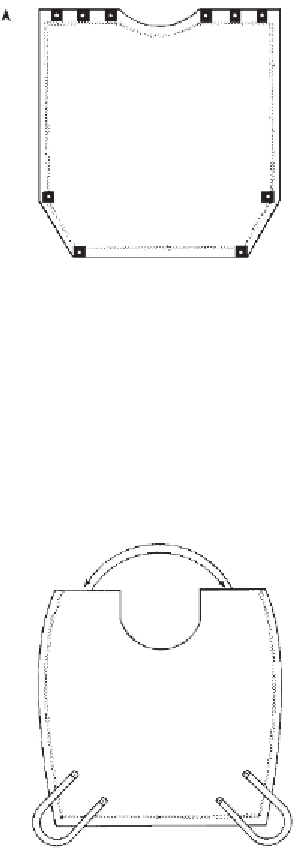Agriculture Reference
In-Depth Information
Sheep Coats
To sell successfully to handspin-
ners, your fl eeces must be free
of vegetation. One way to have
clean fl eeces is to put coats (or
sheep blankets or covers, as they
are called in supply catalogs, or
“rugs,” as they are called in some
countries) on your sheep. Sheep
coats have been extensively
tested, and not only do they
increase the quantity of clean
wool, which is expected, but
they also result in longer staples
and improved body weight even
under harsh conditions. Coats
also make shearing easier, partly
because the fl eece is cleaner. In
areas with severe winters, sheep
wearing coats can conserve
energy, and this benefi t shows
up in the maximum percentage
of increased wool growth and
slightly heavier birth weights
for lambs born to ewes wearing
covers.
One shepherd reported no
death losses from coyotes during
coat use and thought that per-
haps the sound created by the
plastic coats as sheep moved or
the sight of the different-colored
coats warded off the predators.
Cost seemed to be the main
factor in making sheep coats
impractical. Cotton coats are
not durable around barbed wire
or brush pasture. Sturdy nylon-
12"
12"
12"
3"
#1 grommet
for chest rope
2" hem
1" hem
34"
join these edges
8" #2 grommet
for leg rope
4" 4"
12"
4"
12"
36"
These are two styles of coats to protect sheep,
with Number 10 duck or canvas used in most
cases. This pattern has grommets used for the
chest and leg ropes.
Neck fl aps sewn together
overlapping from ½" to 3"
to provide different sizes
½" hem
on outside
edges
13"
10"
1½" wide,
constructed
from coating
material
and
hemmed
44"
points of
attachment
(sewn)
32½"
36"
This pattern can be made in three sizes, with
the large having a half-inch overlap on the
neck fl ap and 27-inch leg loops. Medium has
a 1½-inch overlap and 24-inch loops, while
the small has a 3-inch overlap and 24-inch
loops.






































